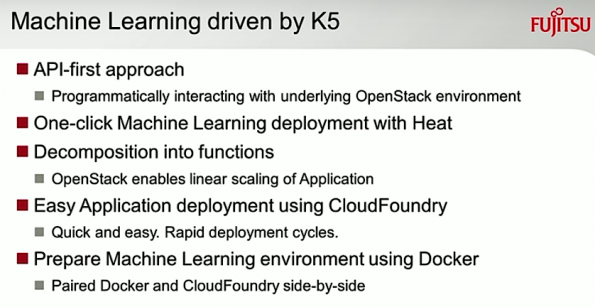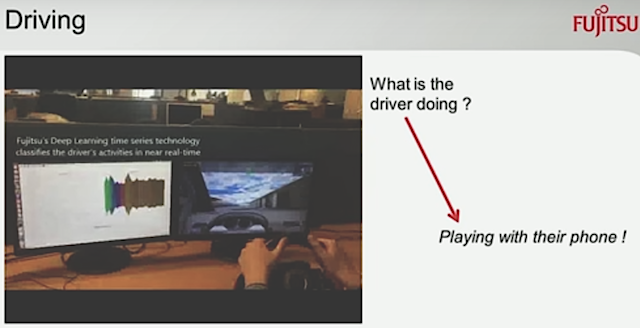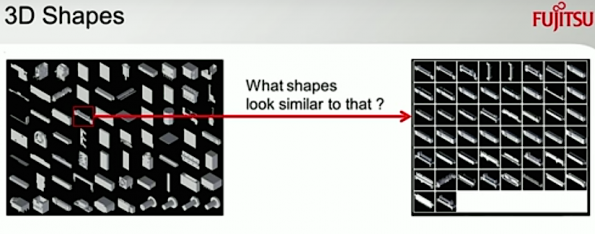Imagine a world where the person intent on multitasking while driving (eating, checking texts, reading) pays more for insurance than you do by keeping your eyes on the road.
That’s one of areas where Fujitsu Ltd. is concentrating artificial intelligence (AI) research efforts along with signature analysis as-a-service and 3D image modeling. If it seems futuristic to control the heat in your house from the office or check the charge of your Tesla from your phone, you’d better hang on.
“We’re living in a hyper-connected world, where every person and every device is connected,” says Jason Daniels, Fujitsu Hybrid IT CTO. “That’s pretty cool, though it’s not cool if you’re an enterprise,” he adds, noting that large corporations are big, monolithic and move at a glacial pace in the breakneck digital era.
Recognizing the challenge, Fujitsu stepped up the pace by fueling R&D into artificial intelligence over 30 years ago, leading to some nifty use cases, including a crowd-congestion app that could help you figure out when to hit the streets for Black Friday or the optimal time to go to the stadium. More recently, artificial intelligence teams built MetaArc, a cloud-based digital business platform offering a bundle of services including internet of things, block chain technologies, big data and AI. The Japanese multinational IT services provider will rev things up by more than doubling AI-related staff to 1,500 by 2018.
Daniels and colleague Roger Menday, principal researcher at Fujitsu Laboratories Europe, demonstrated what they call “Human-centric AI Zenrai,” and tell Superuser how it’s powered by Cloud Foundry, Docker and OpenStack.
For the car example, Menday showed a video where a driver wearing a wristband tracking movements is “busted” while playing with his phone or eating while at the wheel. The simulation screen highlights different colors tracking the activities; the program essentially generates a time series, the images changing in visual recognition of particular patterns.
“Rather than getting into the hairy work of tuning your neural network for every single domain…we’re working like a human brain does to recognize patterns in pictures,” Menday says. This “imagification” process works similarly for signatures (recognizing inliers and outliers) and for 3D shapes, where it can pick out comparable parts for machinery. Menday says the underlying concept is to turn data problems into image problems by using the source data and training the network accordingly.
These great technologies are fueled by Cloud K5, the service at the center of MetaArc, Daniels says. “OpenStack will power digital business platform digital transformation power our future putting people at the heart of what we do,” Daniels says. K5 currently operates in Japan and several regions in the U.K.; a total of 24+ availability zones will arrive at the end of the deployment for this large scale public-cloud offering.

OpenStack offers an API-first approach Menday says. For example, in the case of object storage with Swift “we can do this from our applications in terms of putting up and building a machine learning deployment, we use Heat, which is great — just one click and the whole infrastructure is there and ready to go.” The API side runs through Cloud Foundry, Menday says, adding that the team likes it it very much. “It’s quick and easy and offers very nice rapid deployment cycles.” The machine learning environment is prepared with Docker, pairing it side-by-side with Cloud Foundry, he notes.
“It’s a very human-centric way about thinking about AI and engineering AI and then deploying it to the cloud. This is a journey that we’re currently in the middle of,” Menday says. “It’s how we use OpenStack, how we can leverage these services to get high-availability robustness.”
Putting resources into artificial intelligence to future-proof business is on a lot of people’s minds. Although only one other person in the audience was working on AI when Daniels asked for a show of hands, investment in the sector is booming. Spending on AI technologies is expected to grow to $47 billion by 2020.
Marco Carrubba
// CC BY
- OpenStack Homebrew Club: Meet the sausage cloud - July 31, 2019
- Building a virtuous circle with open infrastructure: Inclusive, global, adaptable - July 30, 2019
- Using Istio’s Mixer for network request caching: What’s next - July 22, 2019

)









